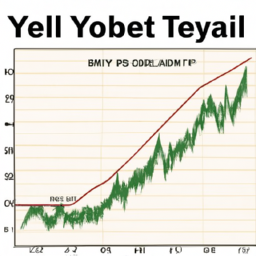Treasury bills, or T-bills, are short-term debt securities issued by the U.S. government. These bills are used to finance the government’s operations and are offered with maturities of one year or less. When you buy a T-bill, you’re lending money to the government in exchange for a set rate of return.
T-bills are debt securities issued by the U.S. Department of the Treasury. They are sold in denominations of $100 or more, with maturities of one year or less. When you purchase a T-bill, you’re lending money to the government in exchange for a set rate of return. The government pays you the face value of the bill plus the interest it earns at maturity.
T-bills are issued through a competitive bidding process, with the lowest accepted yield becoming the rate at which all bills of that maturity will be sold. Investors can purchase T-bills through their bank or brokerage. You can also purchase them directly from the Treasury through TreasuryDirect.
T-bills are attractive to Investors because they are low risk and offer competitive yields. They are also considered to be liquid investments, meaning that you can sell them before maturity without penalty. However, T-bills do not pay periodic interest, so you must wait until maturity to receive your return.
It’s important to keep in mind that the yield on T-bills can fluctuate with the market. If interest rates have increased since your purchase, you would be able to sell the T-bills for more than what you paid. Conversely, if interest rates have declined since your purchase, you would be selling the T-bills for less than what you paid.
The Federal Reserve also has a role to play in the T-bill market. If the Fed believes that the economy is slowing, it will reduce its issuance of Treasury bills, debt that matures in one year or less, and run down its cash balance to buy more time. Conversely, if the Fed believes that the economy is overheating, it may increase its issuance of T-bills.
When the Federal Reserve is looking to raise money, it offers Treasury securities to the public with regular weekly bill auctions, cash management bills (CMBs), and cash management notes (CMNs). These auctions allow the government to borrow money from the public and also allow Investors to purchase Treasury securities at a discounted price.
The yield on T-bills is closely linked to the yield on other types of government securities. For example, if the 3-month Treasury bill yield is higher than the 10-year Treasury note yield, it is more likely that Investors will purchase long-term bonds than roll over short-term Treasury bills.
As with any investment, it’s important to do your research before investing in Treasury bills. Treasury bill yields have risen so far, so fast, that they are now far outpacing other investments. Therefore, it’s important to understand how current market conditions could affect your return on investment.
Finally, it’s important to note that the Federal Reserve can also influence the yield on T-bills. The Fed could temporarily restart quantitative easing and buy Treasuries, as the Bank of England did last September when UK government bond yields dropped to record lows.
